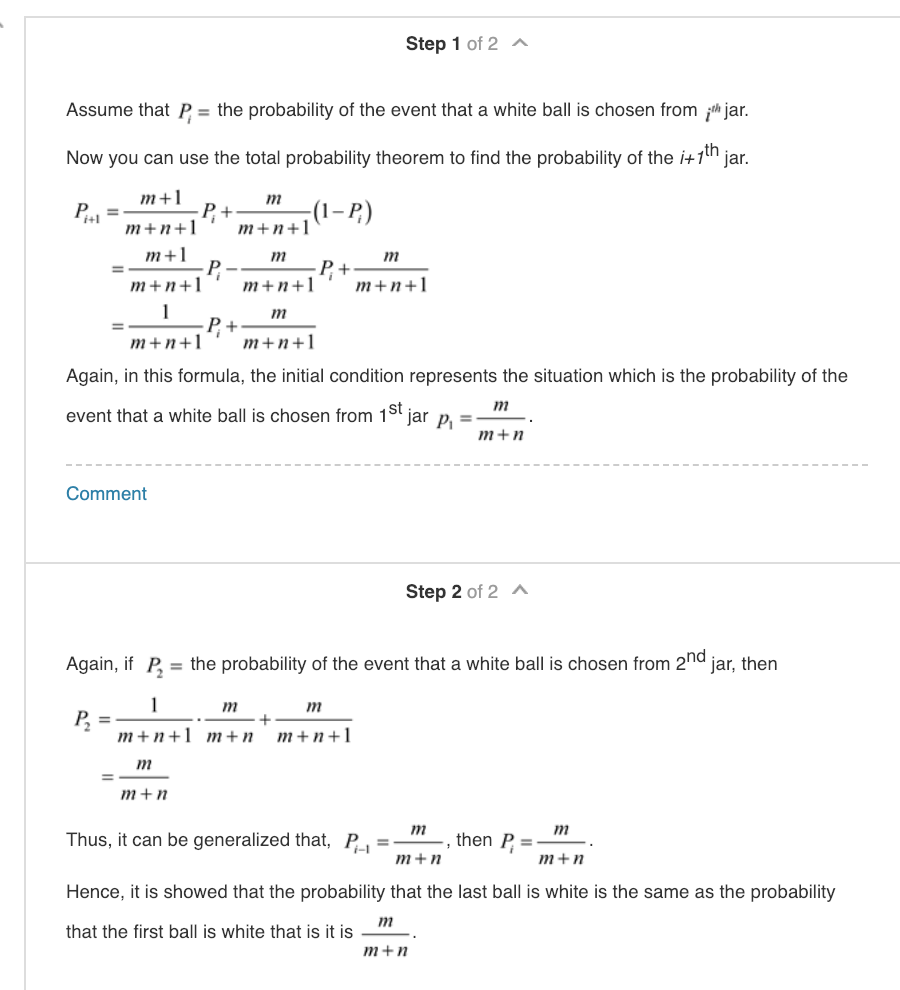Question
Probability Problem 22 -Each of k jars contains m white and n black balls. A ball is randomly chosen from jar 1 and transferred to
Probability
Problem 22 -Each of k jars contains m white and n black balls. A ball is randomly chosen from jar 1 and transferred to jar 2, then a ball is randomly chosen from jar 2 and transferred to jar 3, etc. Finally, a ball is randomly chosen from jar k. Show that the probability that the last ball is white is the same as the probability that the first ball is white, i.e., it is m/(m +n).
For problem 22, use k=5, m=10, n=5. Write a short Python program for problem 22. Provide indented code and comments explaining your solution. Thanks
Solution for problem 22 is below:

Step by Step Solution
There are 3 Steps involved in it
Step: 1

Get Instant Access to Expert-Tailored Solutions
See step-by-step solutions with expert insights and AI powered tools for academic success
Step: 2

Step: 3

Ace Your Homework with AI
Get the answers you need in no time with our AI-driven, step-by-step assistance
Get Started


